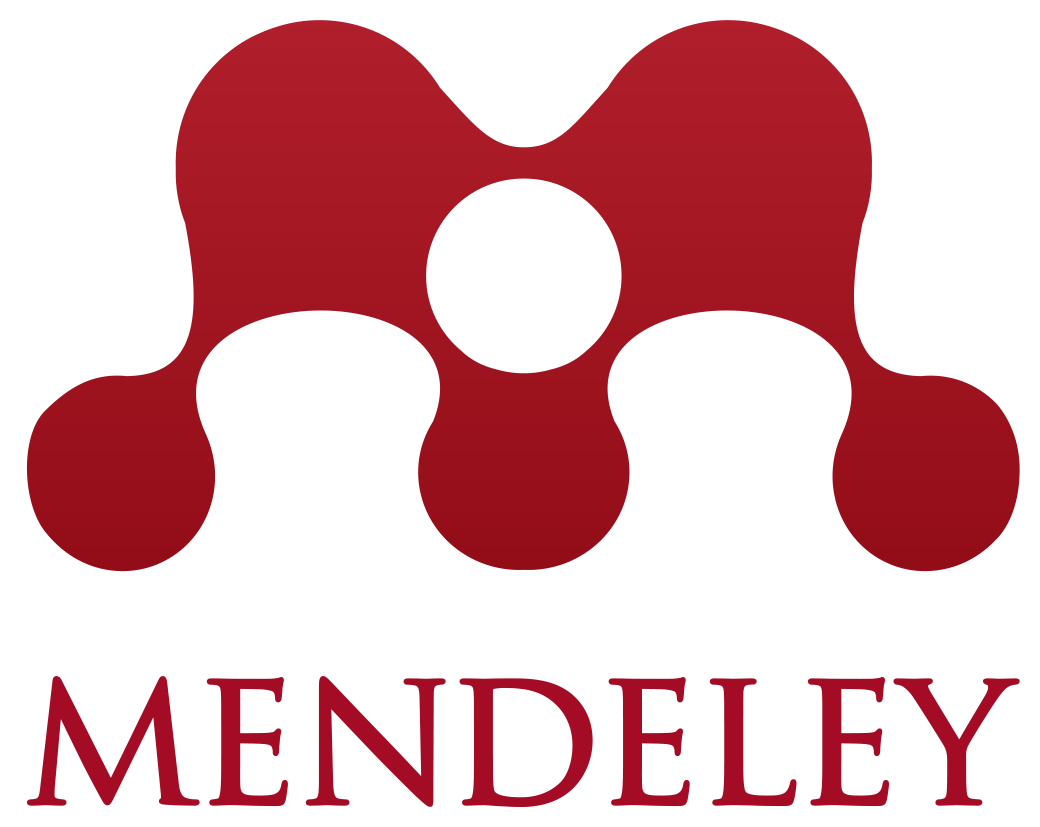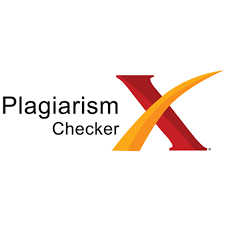Submissions
Author Guidelines
Journal of Soil Science and Environment Jurnal Ilmu tanah dan Lingkungan is a media that presents articles on the results of research and studies of the latest developments in the field of soil science, water, and environmental sciences as the main study material.
Manuscripts in the form of original manuscripts that have never been published or are not in the process of publication in other national and international scientific journals. The author must refer to the instructions below when preparing the manuscript.
MANUSCRIPT PREPARATION
Type of Manuscript
Full Article. The full article is expected to present authenticity, provide major and important advances in the fields of soil, water and environmental science, have an extensive research scheme and present an in-depth discussion of findings. The structure of the article consists of Introduction, Materials and Methods, Results and Discussion, Conclusions and Bibliography. Articles must be typed on a maximum of 15 pages of paper (including pictures and tables).
Script Format
Manuscripts must be prepared in Microsoft Word format, except Graphics using the Microsoft Excel program and Images using the JPEG or PDF format. The manuscript is typed on A4 size paper (21.0 x 29.7 cm) with a distance of 2 spaces, with 12 New Times New Roman letters. Typing distance from the left edge is 3.0 cm, while the right, top, and bottom edges are 2.5 cm each. Each page is given a page number. The manuscript can be written in Indonesian or English.
The manuscript is arranged in the following order:
- If the article is written in Indonesian, the title is written in Indonesian and English, whereas if the article is in English, the title is written only in English.
- The full name of the author without abbreviated.
- The name of the institution, accompanied by the complete address with the postal code number of each author.
- Correspondent authors are provided with a telephone/mobile number and e-mail.
- Running title
- Abstract in Indonesian and English for articles written in Indonesian, while for articles in English, the Abstract is written only in English. The maximum number of words from Abstract is 250 words.
- Keywords maximum of 6 (six) words.
- Introduction
- Materials and Methods
- Results and Discussion
- Conclusions
- Acknowledgments
- References
- Tables and figures and their descriptions.
In addition, the author must fill a Statement which has been signed, especially by the Main Author.
Manuscripts and Declarations must be submitted electronically via an online system:
http://journal.ipb.ac.id/index.php/jtanah
The author cannot send the manuscript electronically, then the manuscript can be sent to the email address:
jtl_soilipb@yahoo.com; jitl@apps.ipb.ac.id
Secretariat Address:
Department of Soil Science and Land Resources Departemen Ilmu Tanah dan Sumberdaya Lahan, Faculty of Agriculture, IPB University, Jl. Meranti Wing 12 Lt 4, Kampus Darmaga IPB, Bogor 16680
No. Tel / Mobile: 0251-8629360 / 085693657277
For complete information can be downloaded below:
EXPLANATION DETAILS ABOUT MANUSCRIPT
Title and Author's Name
The title is bold in capital letters at the beginning of each word, except for conjunctions. The title generally consists of 10-12 words (without conjunctions). Manuscripts in Indonesian must be accompanied by titles in English in italics (italic).
Under the title, write the full names (not abbreviated) of all authors along with the names and addresses of the authors' affiliated institutions. Put * on the author's name for the correspondence. Address for correspondence must be completed with telephone / mobile number and email.
Authors must provide a running title (maximum of 50 characters) which is used as a short title for the page header.
Abstract
Abstract no more than 300 words that do not have references. The abstract must be written briefly including introduction, method, results, and conclusion. Implications of research results should also be listed in the abstract. Abstract written in Indonesian and English. The editor has the right to edit the abstract for reasons of clarity.
Keywords
A maximum of 6 (six) words, the most important first keyword.
Preliminary
The introduction contains the background of the study, objectives and hypotheses (if any) and mentions the previous research that has been done. Give a description (local and scientific name) of the object under study.
Material and Method
Materials and Methods contain a description of the main materials, tools and methods used in the study. The method section must be detailed enough to describe whether this type of research is experimental or exploratory. The method described must be sufficiently detailed and sufficient so that the study can be replicated. If your research uses the previous research method, then briefly explain the method. If you make modifications, draw the modified part.
Results and Discussion
The results obtained are based on the method used. Don't present the same data in tables and graphs. There are no references in the results section. All data presented in the results must be stated in a clear, concise table, picture or graph. The discussion contains a review of research results by comparing the data reported today with previous results. Highlight similarities, as well as differences, and the uniqueness of your findings. Explain why the results are like that.
Conclusion
Conclusions are presented briefly, but reflect the results of the research obtained.
Acknowledgements
Acknowledgements include acknowledgements to donors who provided research assistance.
References
Bibliography lists all the libraries used. Bibliography is written in alphabetical order from the first author's last name. Libraries with the same name of the author (group of authors) are sorted chronologically. If there is more than one library written by the same author (group of authors) in the same year, then the letters 'a', 'b', and so on are added after the year.
Literature as a reference is the source of primary libraries such as journals, patents, dissertations, theses, and textbooks written in the last 10 years; minimum proportion of journals 80%; limit the number of libraries that refer to oneself (self citation); and you should avoid using libraries in libraries, popular books, and libraries from the internet except journals and from government or private agencies.
Literature in the text is written using the name and year system, for example Brady (1990) or (Brady, 1990); Tinker and Nye (2000) or (Tinker and Nye, 2000). If the authors are three or more people, written et al. like Bohn et al. (1979) or (Bohn et al., 1979).
Book:
Brady, N.C. 1990. The Nature and Properties of Soils. 10th ed. Macmillan Publ. Com., New York. 520 pp.
Journal:
Chang, A.C., T.C. Granato and A.L. Page. 1992. A methodology for establishing phytotoxicity criteria for chromium, copper, nickel, and zinc in agricultural land applications of municipal sewage sludges. J. Environ. Qual., 21(2): 521-536.
Manfreda, S., F. Nardi, S. Caterina, S. Grimaldi, C. Angela, R. Giorgio and A. Sole. 2014. Investigation on the use of geomorphic approaches for the delineation of flood prone areas. Journal of Hydrology, 517:863–76.
Institution:
[USDA] United States Departement of Agriculture. 2009. National Engineering Handbook, Part 630 Hydrology Chapter, Hydrology Soil Groups. United State of Agriculture Natural Resource Conservation Service, Washington DC.
Proceedings:
Blum, W.E.H. 1993. Soil protection concept of the Council of Europe and integrated soil research. In H.J.P. Eijsackers and T. Hammers (Eds.). Integrated Soil Research: A Base for Proper Protection. Kluwer Acad. Publ., Dordecht, Boston, London. p. 37-47.
Thesis or Dissertation:
Hadi, S. 2012. Model spasial penggunaan lahan dan arahan rencana penggunaan lahan di Kabupaten Bogor [Tesis]. IPB. Bogor.
Jordan, M.E. 2001. Population dynamics of Oribati mites (Acari: Oribatida) on horse pastures of North Central Florida [Dissertation]. University of Florida. United States.
Information from the internet:
Phyllosphere. 2000. 7th International Symposium on the Microbiology of Surfaces Plant Areas, Berkeley, California, USA: August 3-8, 2000. http://www.cnr.berkeley.edu/p2000/ (accessed March 15, 2001).
Tables and Figures
The table is made in an open form (without vertical lines) and given a short title. Fill in the table typed in Times New Roman 11 point. Footnotes are written below the table in Times New Roman 10-point letters. Tables and pictures (maps, illustrations, graphs) must be original (not photocopied), and made on separate pages. The cost of printing a color image is borne by the author.
The units follow international units, decimals are written using dots, and thousands are written using commas.
MANUSCRIPT REVIEW AND EDITOR'S POLICIES
Manuscripts that are entered will be checked by the Chief Editor. Next, the Chief Editor will assign the manuscript to one of the editors that is suitable for further handling. The appropriate editor will ask at least two reviewers to review the manuscript.
Reviewers must review the manuscript and return the results of the review to the Chief Editor through OJS as soon as possible, no later than 3 weeks. If one of the reviewers recommend a rejection, then the Chief Editor will ask the Editor's Board to determine the acceptance or rejection of the submitted text.
Manuscripts that need to be revised will be returned to the author, and the writer must return the revised manuscript to the Chief Editor via OJS from the Journal of Soil Science and Environment Jurnal Ilmu Tanah dan Lingkungan no later than 3 weeks. After that, the revised manuscripts are sent back to the Chief Editor / Editor to check whether the revised manuscripts are as suggested by reviewers within 2 weeks. After that, the manuscript is forwarded to the Technical Editor for display. The Chief Editor will send a letter of acceptance for the manuscript to be published to the author.
Submission Preparation Checklist
All submissions must meet the following requirements.
- The submission has not been previously published, nor is it before another journal for consideration (or an explanation has been provided in Comments to the Editor).
- The submission file is in Microsoft Word, RTF, or WordPerfect document file format.
- The text is double-spaced; uses a 12-point font; employs italics, rather than underlining (except with URL addresses); and all illustrations, figures, and tables are placed within the text at the appropriate points, rather than at the end.
- The text adheres to the stylistic and bibliographic requirements outlined in the Author Guidelines, which is found in About the Journal.
- If submitting to a peer-reviewed section of the journal, the instructions in Ensuring a Blind Review have been followed.
Copyright Notice
Department of Soil Science and Land Resources Departemen Ilmu Tanah dan Sumberdaya Lahan, Faculty of Agriculture Fakultas Pertanian, IPB University
Privacy Statement
The names and email addresses entered in this journal site will be used exclusively for the stated purposes of this journal and will not be made available for any other purpose or to any other party.

















